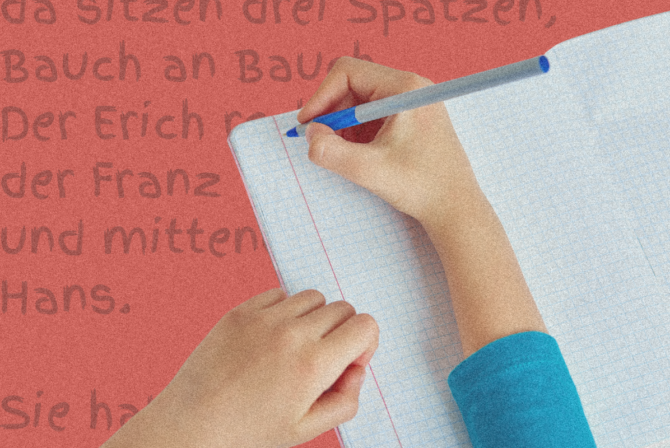One of the greatest joys of my childhood was waking up to find a dress for my Barbie under my pillow. My one Barbie — a solid, pony-tailed redhead in a black-and-white-striped bathing suit — had one or two outfits that were store-bought. The surprises I woke up to were fashioned by my mother. She would stay up late at night, fitting scraps of material onto Barbie’s impossibly shaped frame. Hand-stitched, no two styles alike, I did not then appreciate how much time and effort went into my mother’s creations. Nor did I appreciate what Barbie meant to her.
Ruth Handler’s iconic female toy came onto the scene in 1959, when I was 3 years old. In another two years, I would be playing with her. Unlike the story behind “Weird Barbie” in Greta Gerwig’s recent blockbuster movie, I did not deface my doll — cutting her hair or drawing on her would have felt sacrilegious. (It’s not like I could hope to get another Barbie.) I relished whatever my parents would spring for; a happy Hanukkah gift was a case in which I could hang, on tiny, colorful hangers, my Barbie’s unique dresses. Like other young doll owners, I had no knowledge of or thoughts about feminism, diversity, existential crises or any of the Barbie movie’s other themes. And though she valued and embodied the doll’s can-do, independent spirit, neither did my mother.
Mattel’s advertising supposedly spoke directly to little girls. I, however, never agitated for Barbie. My mother wanted the doll. Perhaps unconsciously, for me and her both.
As a young girl, my mother, the second of six children in a struggling family in Sighet, Transylvania, had large responsibilities. Rarely could she engage in the important business of play. There were always chores to be done — scrubbing the floor, washing diapers, stoking the fire. There were errands to run for her mother, there was babysitting for her siblings and little cousins, and delivering poultry orders for her butcher grandmother. There was barely time for school work, let alone toys.
Whenever she could, my mother climbed up to the attic of a neighborhood shed — her secret spot away from her family’s cramped, bustling apartment. With a needle, thread and scraps of fabric given to her by a local seamstress, she made rag dolls and clothes for them — treasures that delighted her little sisters.
War came. Her father was conscripted into Hungarian forced labor. She could no longer attend school. Her responsibilities only grew. Then, at age 14, my mother was deported, together with her family and entire community, to Auschwitz-Birkenau. Her already truncated childhood ended.
Or maybe it was tragically, traumatically, suspended. And in retrospect, resumed in a different way, at another time and place — when purchasing a Barbie for her daughter enabled her to lose herself in imaginative play.
While affixing tiny snaps and stitching small bows and trim onto miniature garments she molded to my Barbie, my mother was able to attend to unfinished business. Little did she know that the American businesswoman who created the doll she so enjoyed was born to Polish-Jewish immigrants, that she suffered her own childhood trials, and that she paid close attention to the potential in play, filling a gap in a market that maybe was not only for girls.
We now know not only about the importance of play, but also about the esteem-building effects of giving children real responsibilities. Unlike my mother, who was counted on for meaningful contributions to her family’s welfare, I had plenty of time to engage in creative play while I was growing up. (I actually envied a friend who had to wash dishes.) And so I did. Not only with my Barbie, giving those wonderful handcrafted garments significant use, but also (embarrassingly) into my teen years. I spent countless hours making cutout dolls and outfits for them. I still cannot bear to throw away the white cardboard that comes in a package of stockings, which is the perfect thickness for a cutout doll.
Only my grown daughter could tell you whether her childhood had a healthy balance of play and responsibility. I know she enjoyed opportunities to get lost in imaginary worlds with her younger cousins, who had an army of Barbies, Kens and Skippers. As for my granddaughters, I am not sure how often they play with their Barbie-sized Disney princesses. When they come to visit, they appreciate quiet hours in the top floor of our townhouse. In this closet-sized room off my office, they have my daughter’s dollhouse furniture, miniature accessories and tiny fairies with which to indulge their fantasies. At age 5, my eldest granddaughter dubbed the space her office. How apt, I thought — the business of play is serious, and children love having a peaceful place where they can do their “work.”
Now what, you may wonder, became of those under-my-pillow treasures? My daughter put them to good use with her own few Barbies. But by the time I became a grandmother, I believed they were more than Barbie wearables. They held a story that revealed something about my mother’s talents and desires, and her ability, finally, to attend to certain unfinished business. And so I salvaged and framed five of her creations. They hang in our guest bedroom. When she slept in that room, my mother was somewhat amused. Remembering the process by which she measured and stitched, I doubt she saw in her dresses all that I did.








